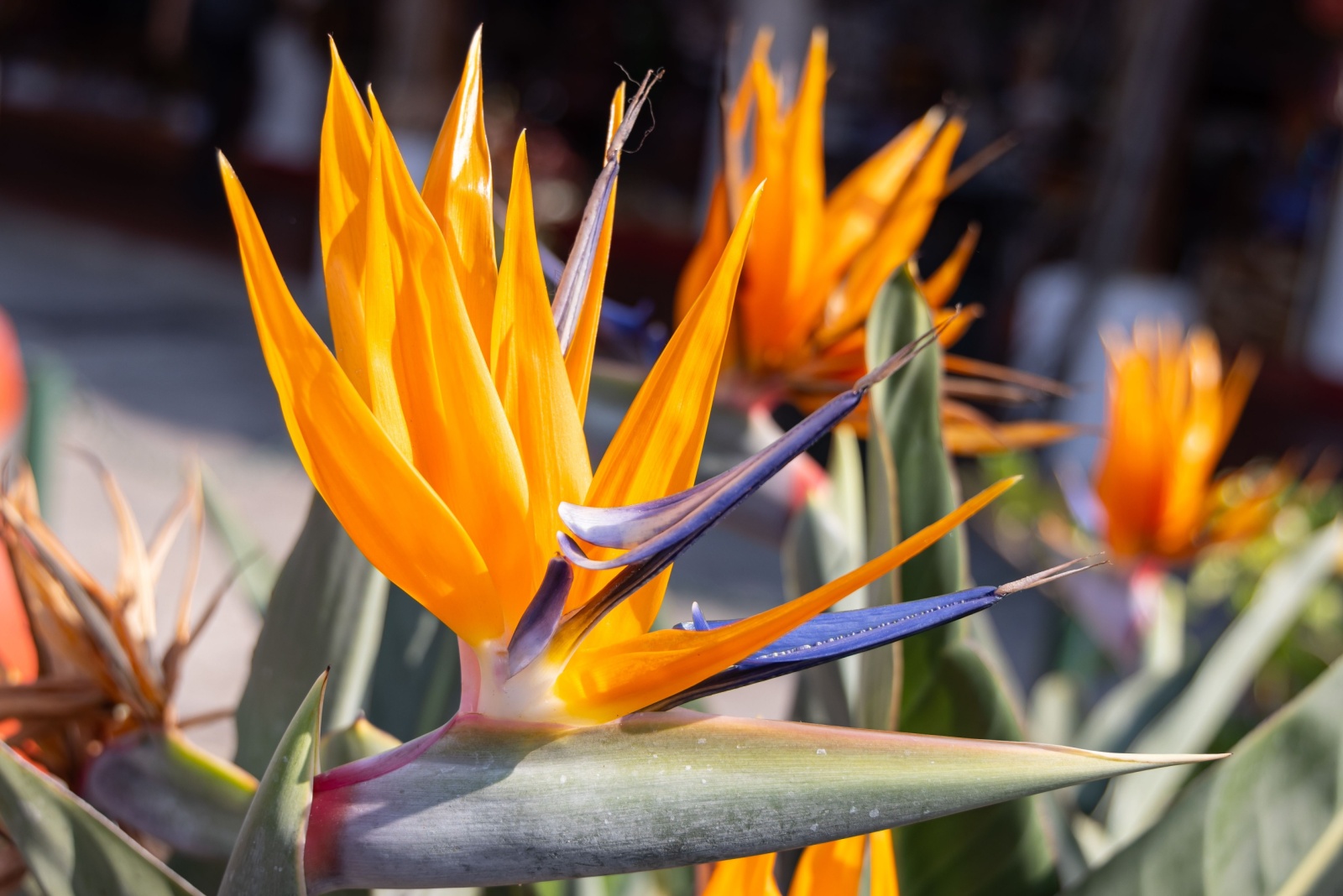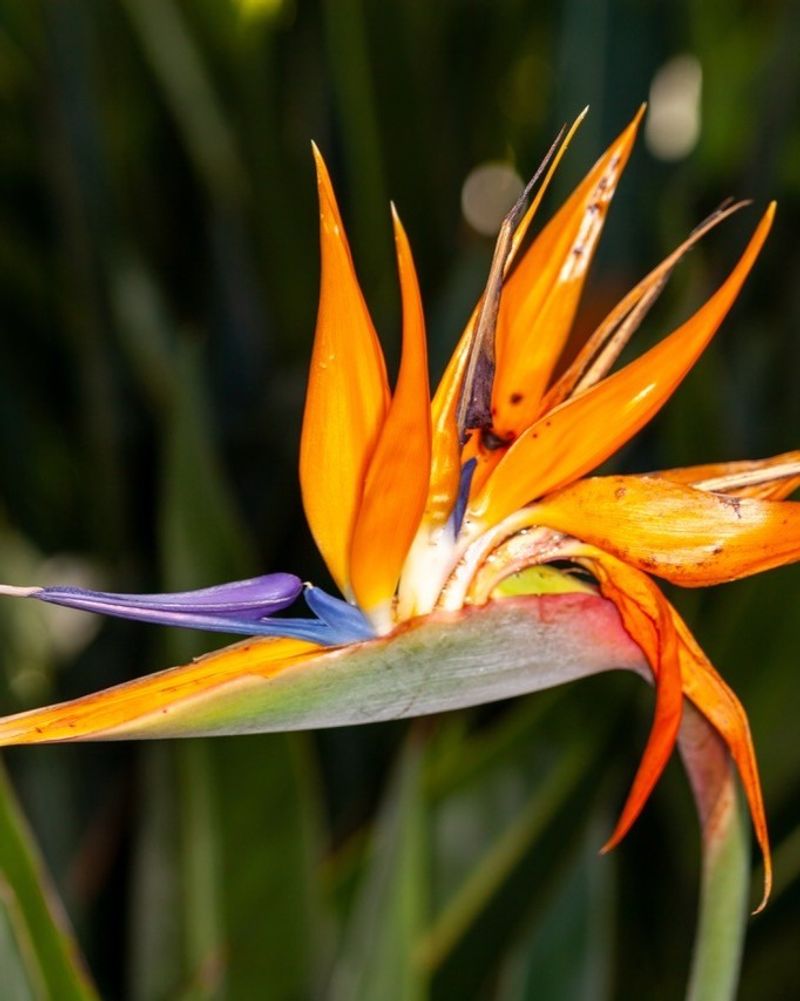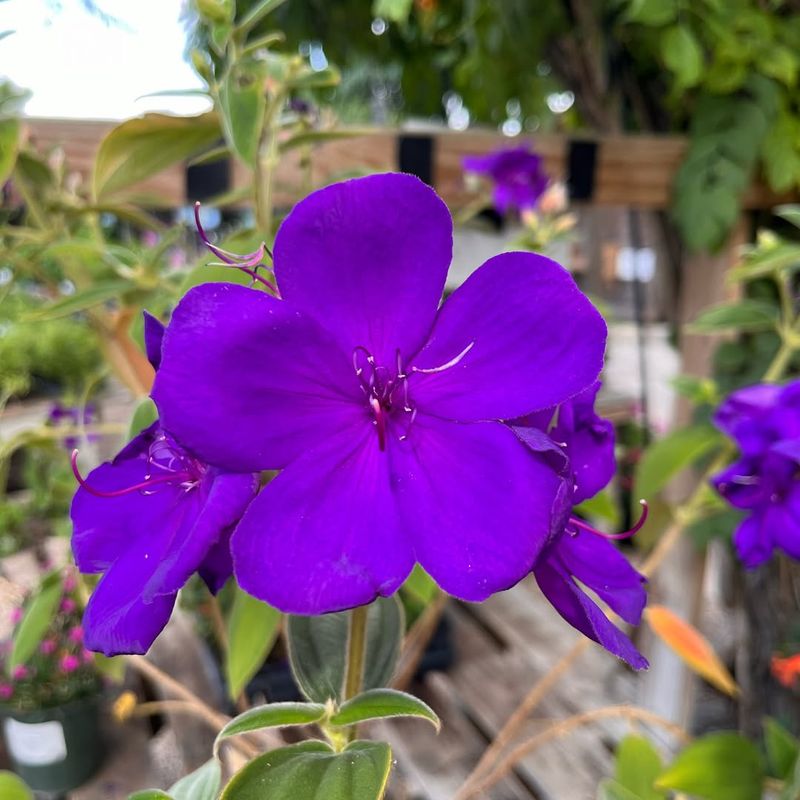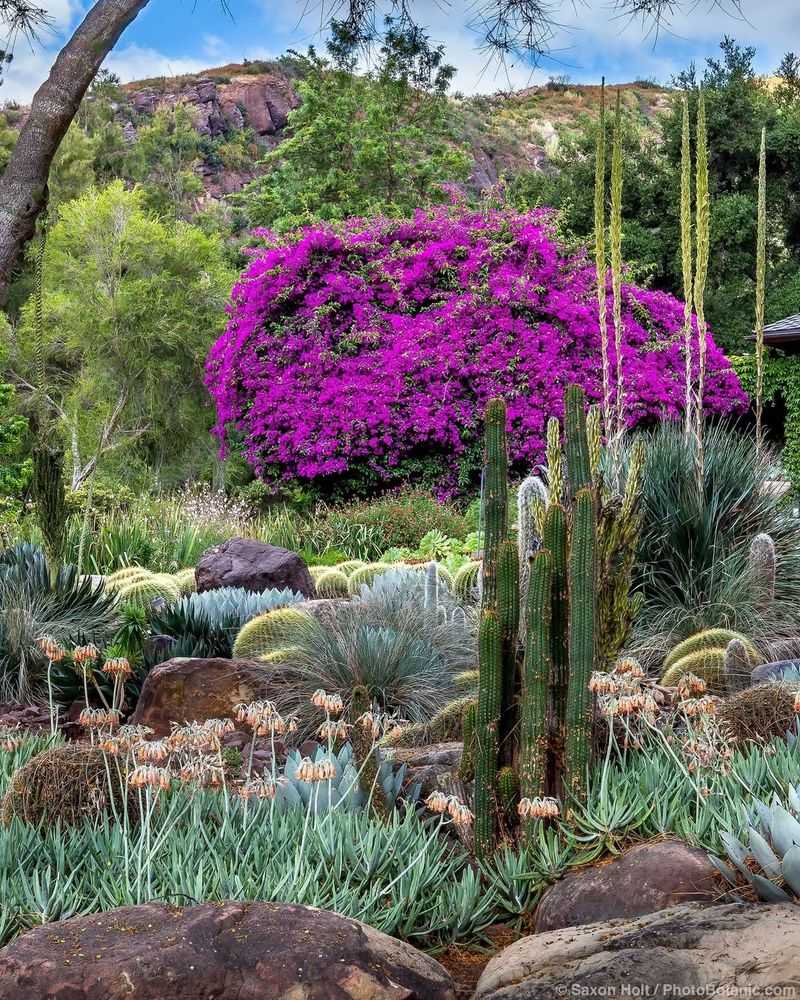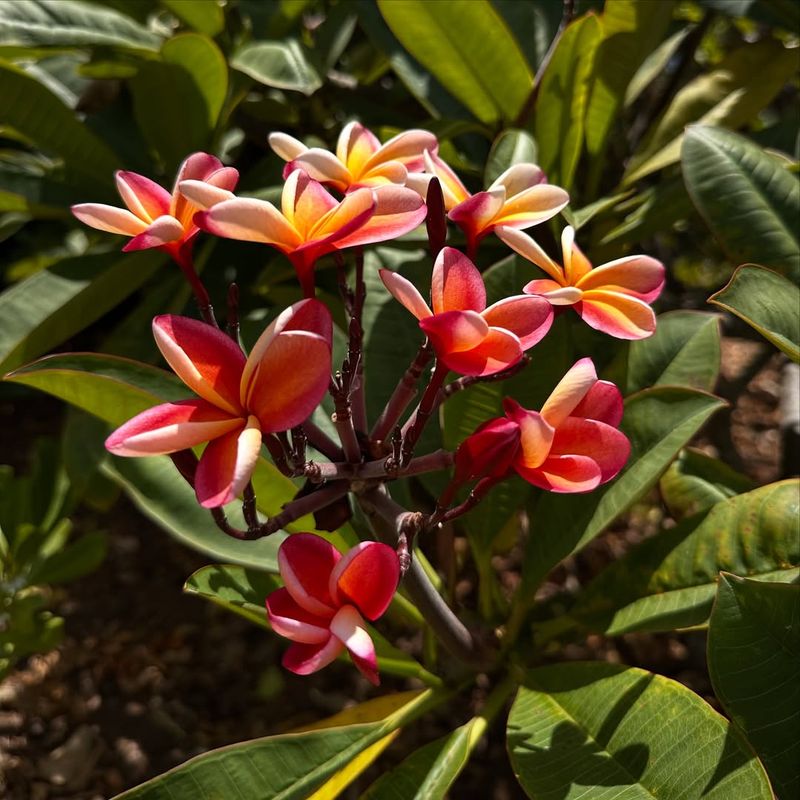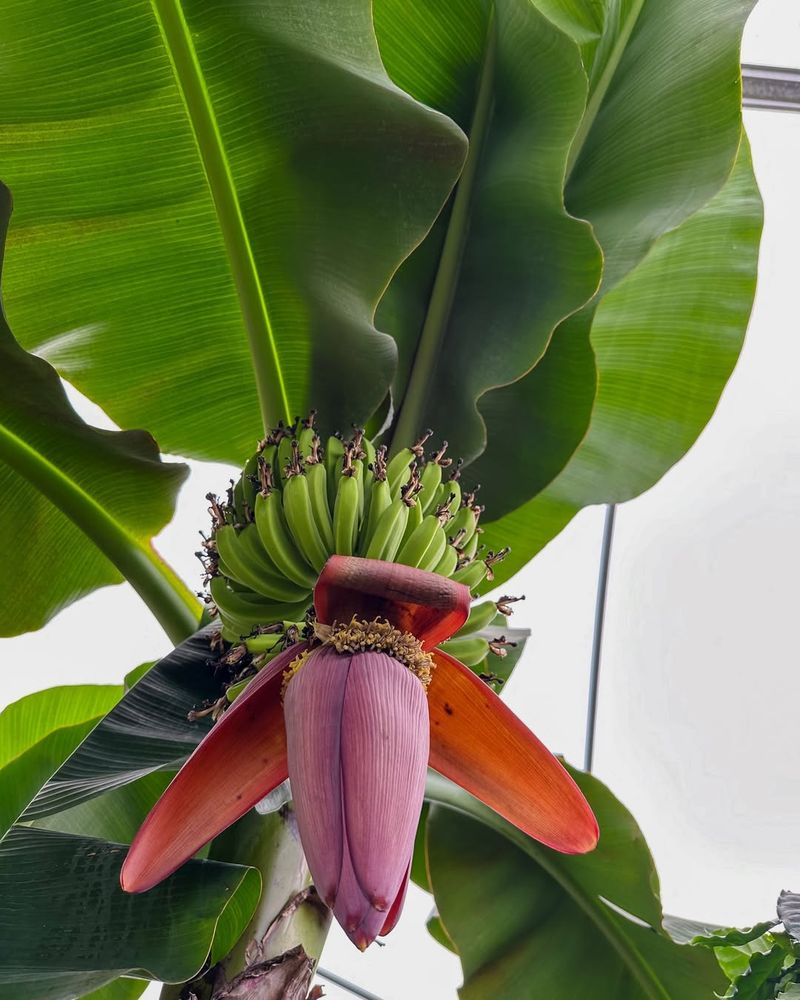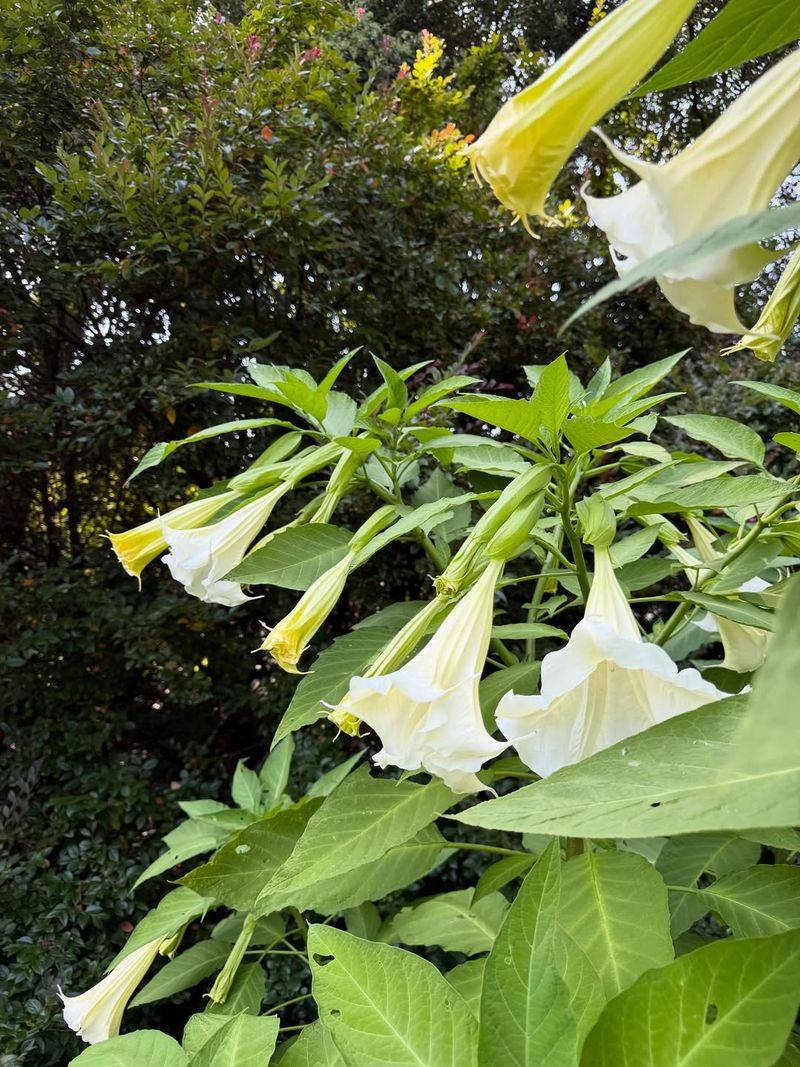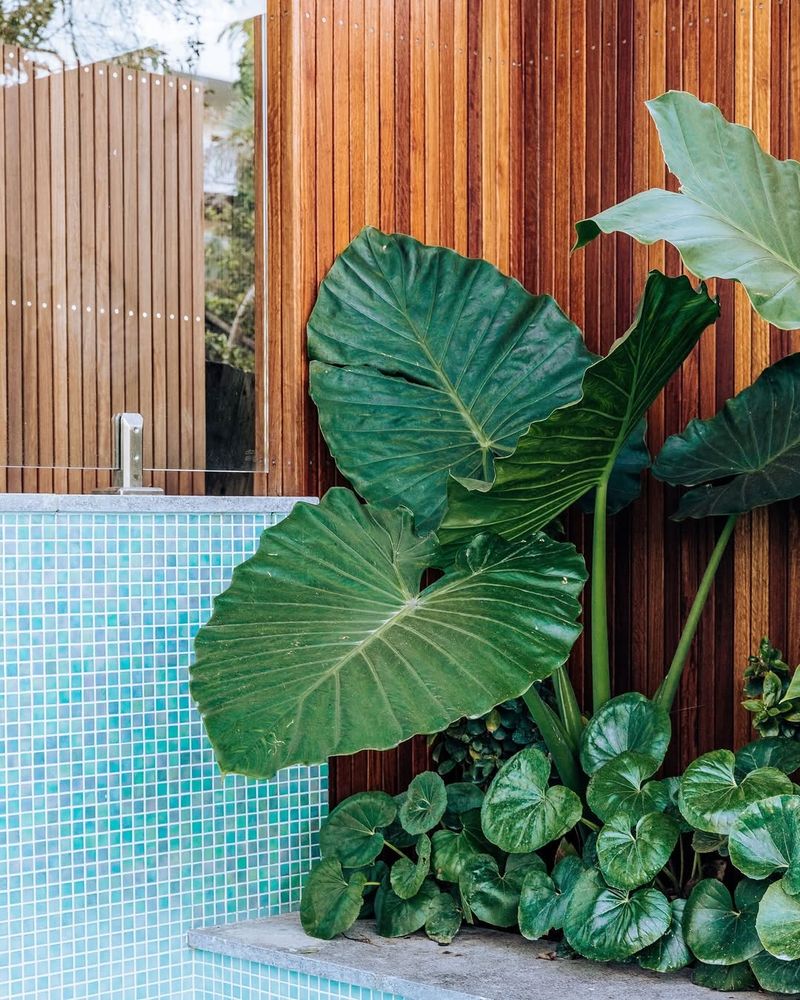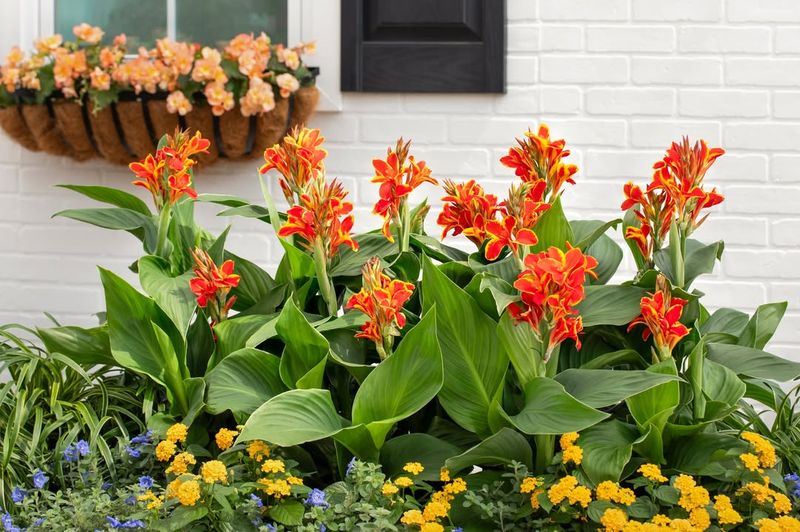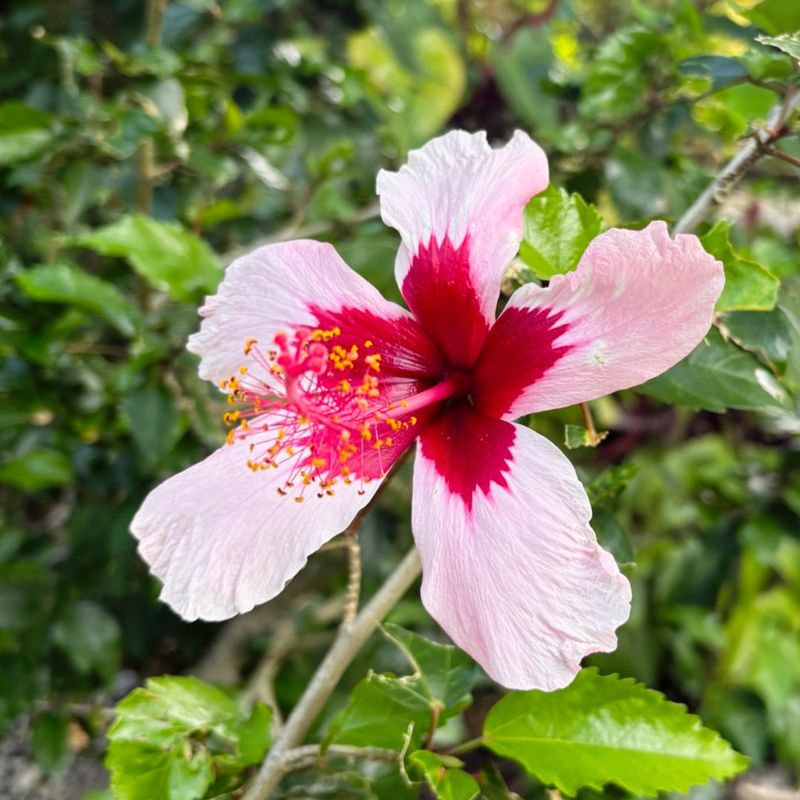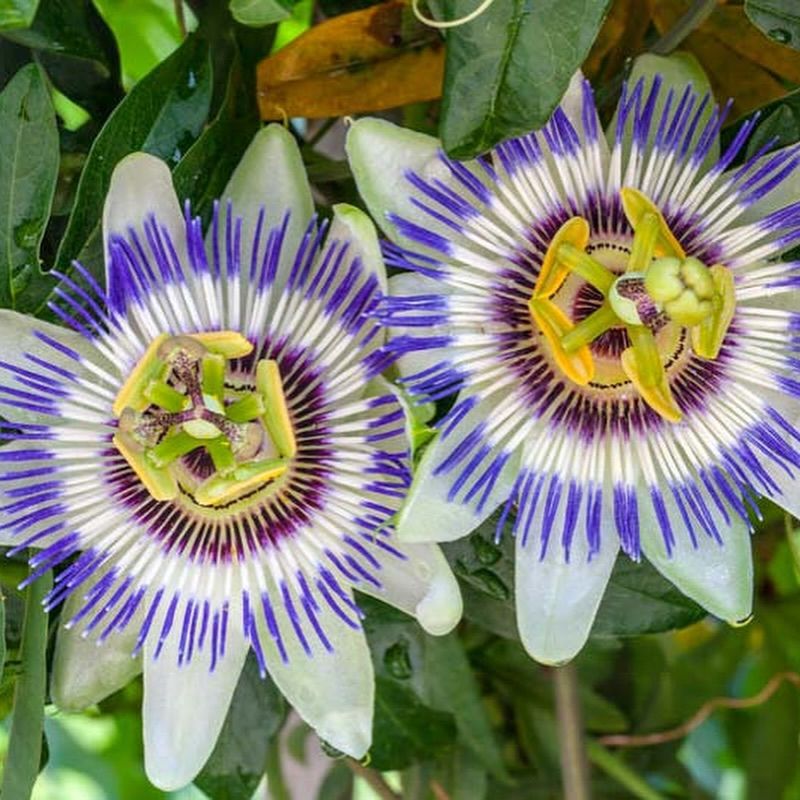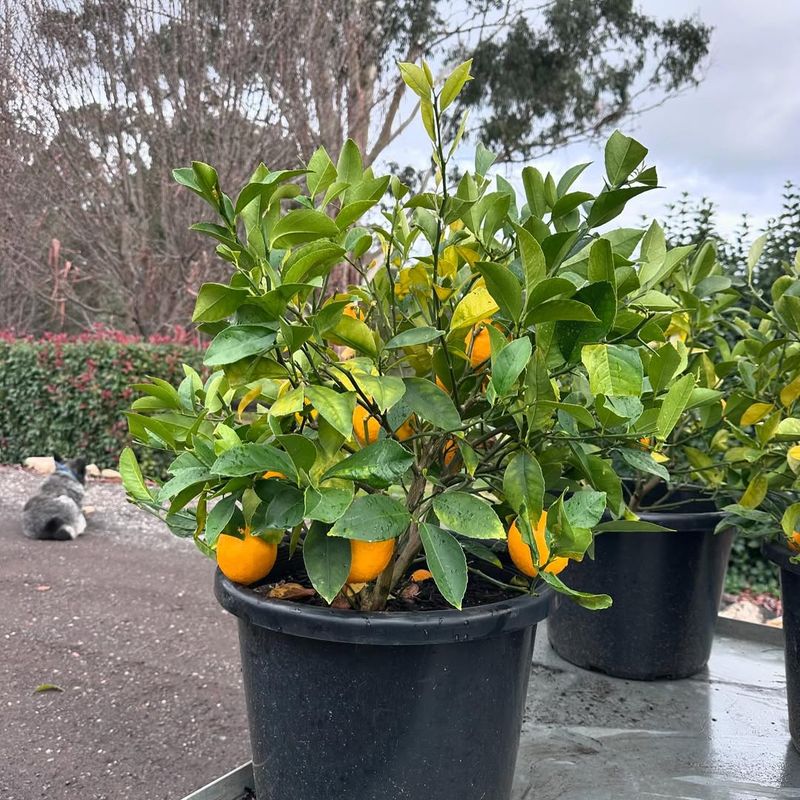California’s mild coastal climate makes it easy to grow tropical plants outdoors all year. With little risk of frost, many regions feel like a natural fit for lush, exotic greenery.
Gardeners can turn their yards into vibrant retreats that echo faraway destinations. Palms, hibiscus, and elephant ears thrive here with minimal fuss.
These tropical beauties add bold texture, rich color, and a laid-back vibe to any space. It’s like bringing a slice of paradise right to your doorstep.
1. Bird Of Paradise
Nothing says tropical paradise like these dramatic orange and blue flowers that resemble exotic birds in flight. They thrive along coastal California areas where temperatures rarely dip below freezing.
In my San Diego garden, these showstoppers have survived for years with minimal care beyond occasional watering during dry spells. The large paddle-shaped leaves create stunning architectural interest even when not blooming.
Plant them where they have room to spread, as mature specimens can reach 6 feet tall and wide. They make excellent focal points near pools or patios where their dramatic silhouettes can be appreciated.
2. Princess Flower
Royal purple blooms cover this Brazilian native from summer through fall, creating a magnificent display in California gardens. The velvety flowers measure up to 3 inches across with prominent yellow stamens that attract butterflies and hummingbirds.
Growing this beauty in my Bay Area garden has been surprisingly easy. While it can reach 15 feet in frost-free areas, regular pruning keeps it manageable as a container specimen or smaller shrub.
Those gorgeous purple flowers aren’t the only attraction – the leaves turn bronze-red when young and develop interesting veins as they mature. Plant in well-draining soil with protection from harsh afternoon sun.
3. Bougainvillea
Cascading over walls and fences throughout Southern California, these vivid flowering vines create spectacular displays of color. The papery bracts (often mistaken for petals) come in hot pink, purple, orange, white, and red, lasting for months on end.
My coastal garden features three varieties climbing along a south-facing wall. They require minimal watering once established – in fact, they bloom more prolifically when slightly stressed for water.
Train young plants on trellises or allow them to spill over retaining walls for dramatic effect. Just watch out for the thorns when pruning! Their drought tolerance makes them perfect for California’s water-conscious gardens.
4. Plumeria
Famous for their use in Hawaiian leis, plumeria produces intensely fragrant flowers in shades of pink, yellow, white, and red. Their sweet perfume intensifies in the evening, making them perfect near patios where you can enjoy their scent.
After growing these in my Southern California garden for years, I’ve found they’re surprisingly forgiving. During winter in cooler regions, they can be moved to protected locations or even brought indoors temporarily.
Start with a potted specimen before committing to ground planting. Their frangipani fragrance transports you straight to a tropical vacation, and cut flowers float beautifully in shallow bowls for natural home fragrance.
5. Banana Plant
Few plants create tropical drama like banana plants with their massive paddle-shaped leaves that can reach several feet long. While not all varieties produce edible fruit in California’s climate, their bold texture makes a stunning statement.
The red Abyssinian banana in my garden grows incredibly fast during summer, creating a lush backdrop for smaller flowering plants. Its burgundy-tinged leaves add unexpected color to the landscape.
Choose dwarf varieties like ‘Truly Tiny’ for smaller spaces or containers. Plant in sheltered locations away from strong winds that can shred those magnificent leaves, and provide regular water during growing season.
6. Angel’s Trumpet
Hanging like elegant bells from woody stems, the massive trumpet-shaped flowers of Brugmansia create an unforgettable garden focal point. Their intoxicating fragrance intensifies at night, perfuming entire California gardens with their sweet scent.
Growing them in my Sacramento garden required finding just the right spot – morning sun with afternoon protection keeps them happiest. The flowers come in white, yellow, peach, and pink, often reaching 12 inches long.
Keep in mind that all parts are highly toxic if ingested, so place away from children’s play areas. Regular feeding during growing season promotes continuous blooming from spring through fall in most California climates.
7. Elephant Ears
Creating instant tropical drama with their massive heart-shaped leaves, elephant ears transform ordinary California gardens into lush rainforest retreats. Various species offer green, black, or variegated foliage, some reaching three feet across.
My specimens grow alongside a small water feature where they enjoy the extra humidity. Unlike many tropicals, they appreciate partial shade, making them perfect for brightening darker corners of the garden.
Provide rich, moist soil and regular feeding for maximum growth. In cooler Northern California areas, mulch heavily for winter protection or grow in containers that can be moved to sheltered locations during cold snaps.
8. Canna Lily
Tall stalks crowned with orchid-like blooms in fiery shades make canna lilies standout performers in California gardens. Beyond the flowers, many varieties offer striking foliage in burgundy, striped, or variegated patterns that provide interest even when not blooming.
After experimenting with several varieties in my zone 9 garden, I’ve found they multiply rapidly in our climate. Dividing them every few years keeps them vigorous and provides plenty of plants to share with neighbors.
Plant them in groups of three or five for maximum impact. Their water-loving nature makes them excellent choices near ponds or in areas that stay slightly damp, though established plants tolerate average garden conditions.
9. Chinese Hibiscus
Dinner-plate sized blooms in eye-popping colors make hibiscus the ultimate tropical showstopper for frost-free California gardens. Single and double varieties offer endless options from classic red to pink, yellow, orange, and even blue-toned purples.
The hibiscus hedge along my garden path blooms nearly year-round in my coastal zone 10 location. Regular pruning maintains bushiness and prevents legginess, while also encouraging more flowering.
Feed regularly during growing season with a high-phosphorus fertilizer to maximize bloom production. In borderline climates, container growing allows you to move plants to protected areas during occasional frost warnings.
10. Passion Flower Vine
Exotic flowers that look like they belong on another planet make passion vines unforgettable additions to California gardens. The intricate purple, white, and yellow blooms feature elaborate filaments, followed by edible fruit on some varieties.
Training them on my garden trellis has created a living wall of green punctuated by these alien-looking blooms. An unexpected bonus: they serve as host plants for Gulf Fritillary butterflies, bringing additional wildlife to the garden.
Fast-growing and eager to climb, they quickly cover arbors, fences, or pergolas. Choose from dozens of varieties, from the common blue passion flower to rare species with red or white blooms suitable for different California microclimates.
11. Dwarf Citrus Trees
Fragrant blossoms, glossy foliage, and colorful fruit make dwarf citrus trees the perfect tropical accent for California patios and small gardens. Varieties like Meyer lemon, Bearss lime, and Calamondin orange stay compact while providing year-round interest.
My collection started with a single potted lemon and has expanded to five different varieties. Growing them in containers allows me to move them to protected spots during rare frost warnings in my Northern California garden.
Choose grafted dwarf varieties for best results in limited spaces. The sweet fragrance of citrus blossoms perfumes the entire garden in spring, followed by months of ornamental fruit that doubles as a culinary harvest.

